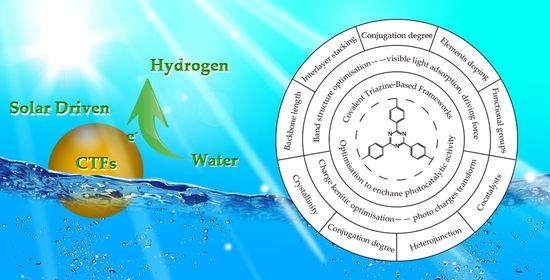Modification of Covalent Triazine-Based Frameworks for Photocatalytic Hydrogen Generation
Abstract
Share and Cite
Xie, J.; Fang, Z.; Wang, H. Modification of Covalent Triazine-Based Frameworks for Photocatalytic Hydrogen Generation. Polymers 2022, 14, 1363. https://doi.org/10.3390/polym14071363
Xie J, Fang Z, Wang H. Modification of Covalent Triazine-Based Frameworks for Photocatalytic Hydrogen Generation. Polymers. 2022; 14(7):1363. https://doi.org/10.3390/polym14071363
Chicago/Turabian StyleXie, Jijia, Zhiping Fang, and Hui Wang. 2022. "Modification of Covalent Triazine-Based Frameworks for Photocatalytic Hydrogen Generation" Polymers 14, no. 7: 1363. https://doi.org/10.3390/polym14071363
APA StyleXie, J., Fang, Z., & Wang, H. (2022). Modification of Covalent Triazine-Based Frameworks for Photocatalytic Hydrogen Generation. Polymers, 14(7), 1363. https://doi.org/10.3390/polym14071363






